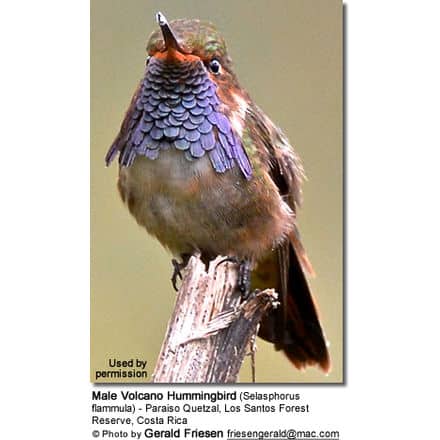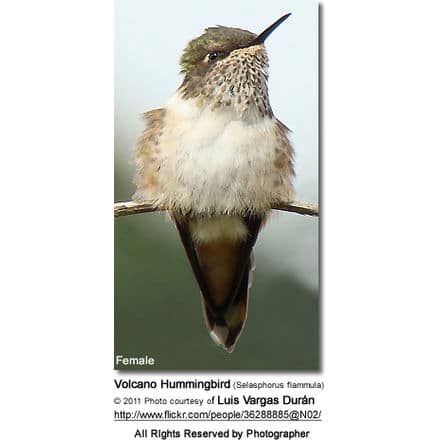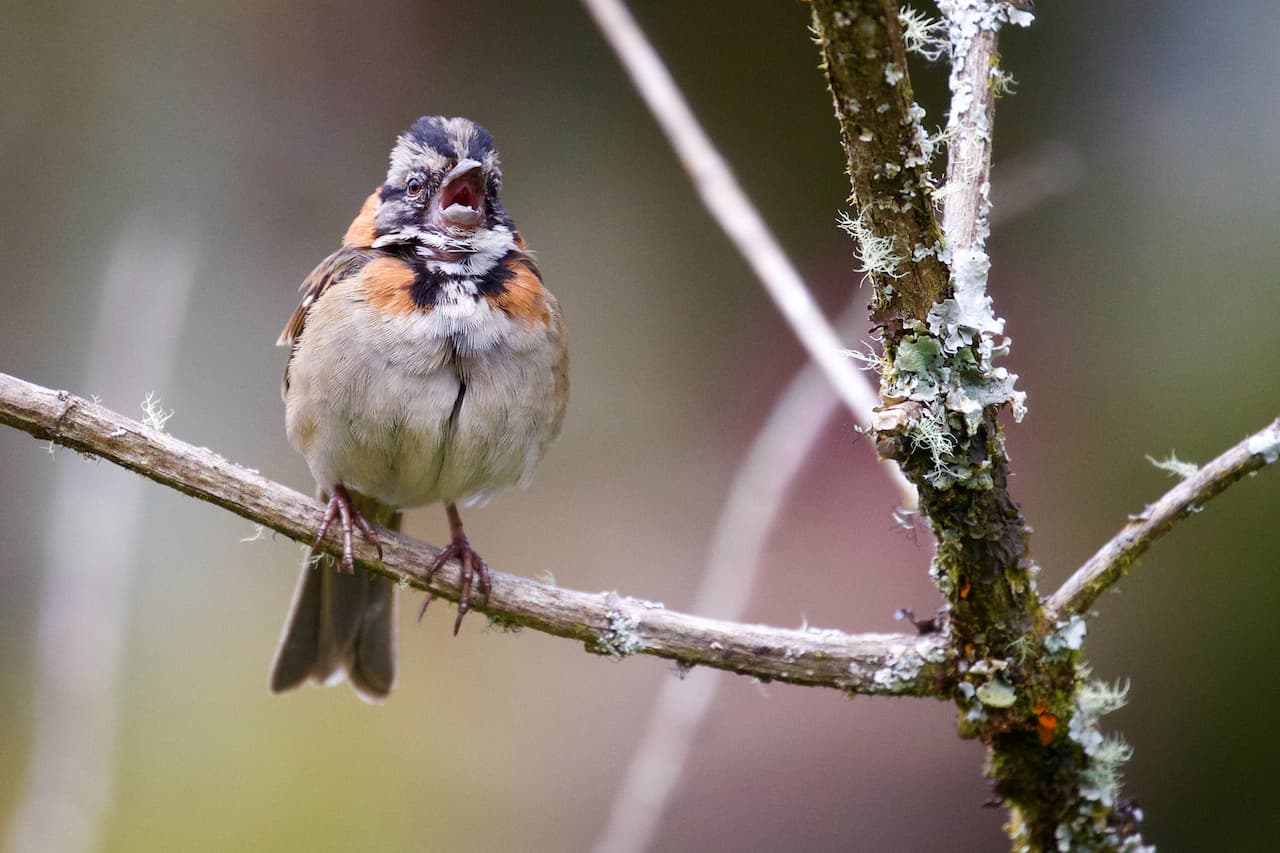Volcano Hummingbird
The Volcano Hummingbird (Selasphorus flammula) – also known as Rose-throated Flamebearer or Rose-throated Hummingbird – is a Central American hummingbird that occurs naturally only in the mountains of Costa Rica and Chiriqui, Panama, where it inhabits open brushy areas, paramo, as well as the edges of elfin forest at altitudes from 1850 m (~ 6,070) to the highest peaks.
At lower elevations, this species is replaced by the related Scintillant Hummingbird (Selasphorus scintilla).
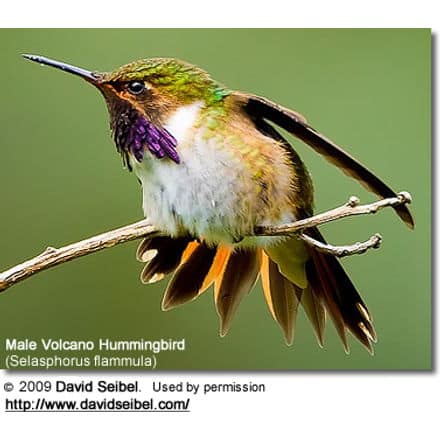
Alternate (Global) Names:
Spanish: Chispita Volcanera, Colibrí Volcanero … French: Colibri flammule … Italian: Colibrì dei vulcani … German: Kirschkehlkolibri, Vulkanelfe, Weikehlkolibri, Weinkehlkolibri … Finnish: Ruusukurkkukolibri … Danish: Selasphorus simoni, Vulkandværgkolibri … Dutch: Vulkaankolibrie … Czech: Kolibrík vulkánový, kolib?ík vulkánový … Norwegian: Vulkankolibri … Polish: rudaczek kryzowany …Russian: ??????????? ?????????? … Slovak: cmelovec vulkánový … Swedish: Vulkankolibri … Japanese: baraerifutoohachidori, ??????????? … Chinese: ?????
Subspecies and Distribution:
Selasphorus flammula flammula (Salvin, 1865) – Nominate Race
Range: Central Costa Rica (Volcanes Irazú and Turrialba)
Selasphorus flammula simoni (Carriker, 1910)
Range: Central Costa Rica (Volcanes Poás and Barba)
Selasphorus flammula torridus (Salvin, 1870)
Range: Southern Costa Rica (Cordillera de Talamanca) and extreme western Panama
Description:
This small hummingbird averages only 7.5 cm or ~ 3 inches in length. The male weighs about 2.5 g (0.08 oz) and the female about 2.8 g (0.09 oz). Their bill is black, short, and straight.
Adult males have bronze-green upperparts and rufous-edged black outer tail feathers. The underparts are mostly white. There are some regional differences in their markings:
In the Talamanca range, the male’s throat is grey-purple; in the Poas-Barva mountains, the male’s throat is red; in the Irazú-Turrialba area, the male’s throat is pink-purple.
Adult females look like males, but the throat is white with dusky spots.
Immature birds resemble females except they have buff fringes to the upper plumage.
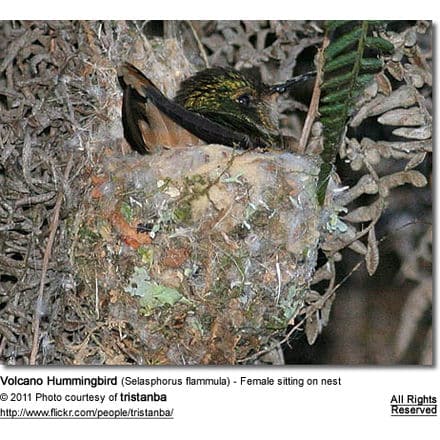
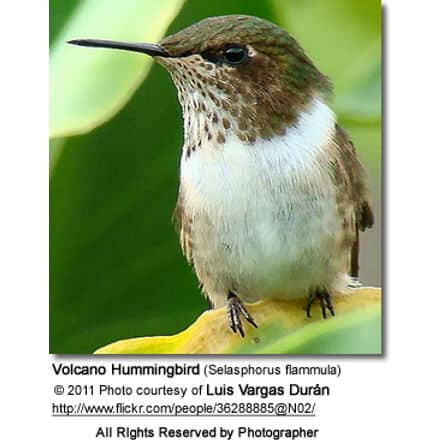
Nesting / Breeding
The female alone is responsible for building the nest and incubating the eggs. The nest is usually a tiny plant-down cup about 1-5 m high placed in a scrub or on a root below a south or east-facing bank.
The average clutch consists of 2 white eggs. The incubation period is about 15 to 19 days. The young fledge when they are about 20 – 26 days old.
During the breeding season, the male perches conspicuously in open areas with flowers and defends his feeding territory aggressively with diving displays.
Diet / Feeding
The Volcano Hummingbird primarily feeds on nectar taken from a variety of brightly colored, scented small flowers of trees, herbs, shrubs, and epiphytes – favoring Salvia and Fuchsia.
Calls / Vocalizations
This hummingbird is generally quiet. Its call sounds like whistled teeeeuu.
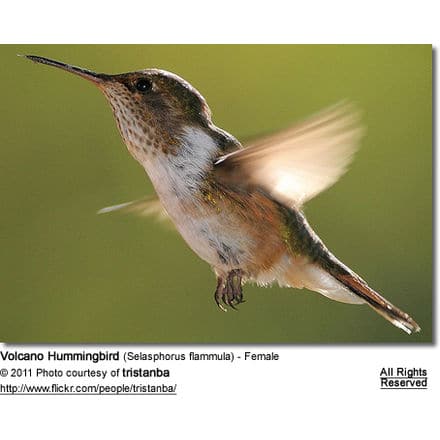
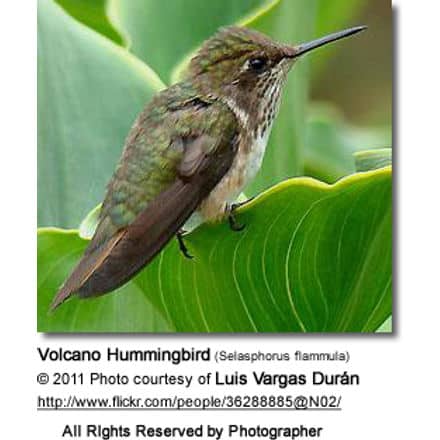
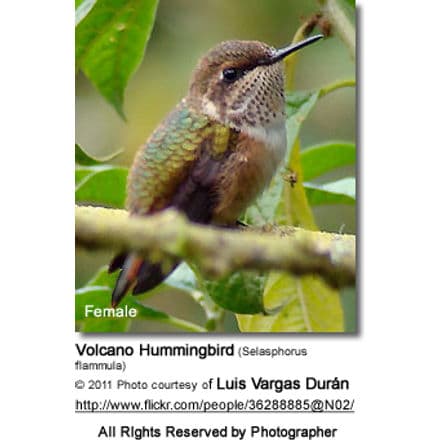
Hummingbird Resources
- Hummingbird Information
- Hummingbird Amazing Facts
- Attracting Hummingbirds to Your Garden
- Hummingbird Species
- Feeding Hummingbirds

